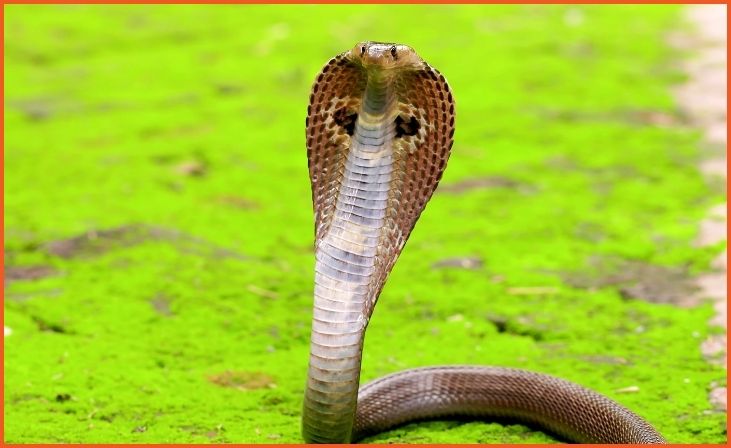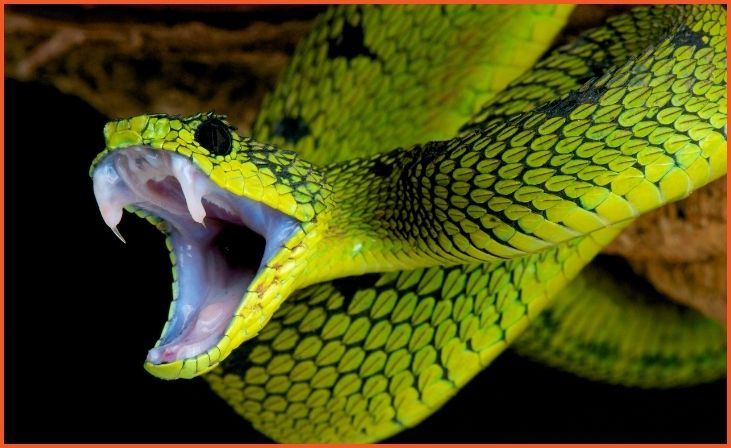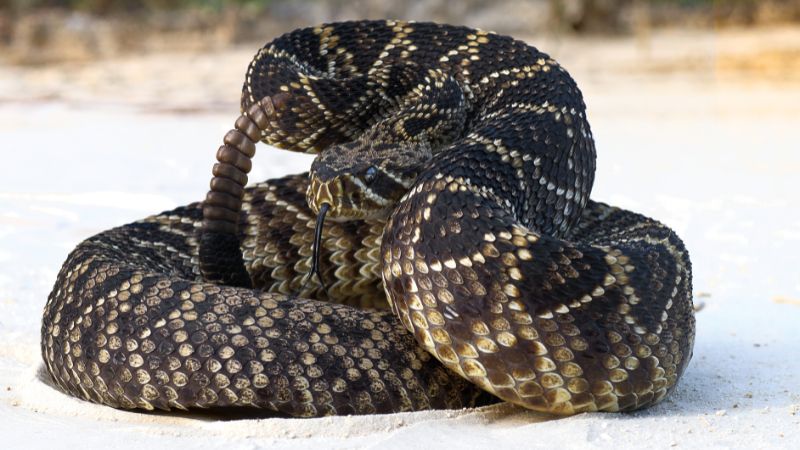The discovery of a record-breaking timber rattlesnake has recently captivated herpetologists, nature enthusiasts, and the scientific community alike. As one of North America’s most iconic reptile species, the timber rattlesnake (Crotalus horridus) is known for its distinctive rattle and impressive size. However, a recent find has taken the fascination surrounding this species to new heights. The discovery of a particularly large specimen has sparked a surge of interest in the timber rattlesnake’s behavior, habitat, and conservation status. This blog post delves into the details of this incredible find, its implications, and the fascinating world of the timber rattlesnake.
The Incredible Size of the Record-Breaking Snake

The record-breaking timber rattlesnake discovered recently is remarkable due to its size, which surpasses previously known dimensions for this species. Typically, timber rattlesnakes can grow up to 3 to 5 feet in length, with some rare individuals reaching nearly 6 feet. However, this newly discovered snake exceeds even these measurements, measuring over 6 feet long and weighing significantly more than average. The discovery of such a massive specimen has amazed researchers, as it challenges existing knowledge about the size limits of timber rattlesnakes. This find prompts questions about the factors that contribute to such growth, including environmental conditions, genetics, and available prey, all of which could play a role in this extraordinary development.
Understanding the Habitat of Timber Rattlesnakes
Timber rattlesnakes are typically found in forested areas, preferring habitats with dense canopy cover and rocky outcrops. These habitats provide the necessary cover for ambush hunting and protection from predators. The record-breaking snake was discovered in a relatively undisturbed forest region, suggesting that less human disturbance may contribute to larger individual sizes. Timber rattlesnakes are known for their adaptability, often occupying a variety of terrains, including deciduous forests, pine woodlands, and even mountainous areas. This adaptability, coupled with a preference for secluded locations, makes timber rattlesnakes both elusive and fascinating creatures. The discovery of such a large specimen in its natural habitat emphasizes the importance of preserving these ecosystems to maintain the biodiversity and health of forest environments.
Behavior and Hunting Strategies

The timber rattlesnake is an ambush predator, relying on its excellent camouflage and the element of surprise to capture prey. This species typically preys on small mammals, such as rodents, birds, and occasionally other reptiles. Its hunting strategy involves lying motionless, often coiled in leaf litter or among rocks, until prey comes within striking distance. The venom of the timber rattlesnake is potent, enabling it to quickly subdue its prey. The record-breaking size of the newly discovered snake may suggest that larger individuals could handle more substantial prey or have a broader diet range. Understanding the hunting behaviors and diet of this particular snake could provide valuable insights into the ecological role of timber rattlesnakes and their impact on the environment.
The Conservation Status and Threats
The timber rattlesnake is currently listed as a species of conservation concern in many parts of its range, primarily due to habitat loss, fragmentation, and human persecution. Despite their ecological importance in controlling rodent populations, timber rattlesnakes face significant threats from human activities. These threats include deforestation, urbanization, and direct killing due to fear and misunderstanding. The discovery of a record-breaking individual highlights the need for conservation efforts to protect these remarkable reptiles. By preserving their natural habitats and raising awareness about the ecological role of timber rattlesnakes, we can help ensure their survival for future generations. Conservation programs focusing on habitat protection, public education, and research are crucial for the long-term survival of the timber rattlesnake population.
The Fascination with Record-Breaking Snakes

The discovery of exceptionally large or unique animals often captures public imagination, and the record-breaking timber rattlesnake is no exception. Such findings generate excitement and curiosity about wildlife and the natural world. For herpetologists and researchers, discovering a record-breaking snake provides an invaluable opportunity to study the biology, behavior, and ecology of the species in greater detail. It also allows scientists to engage with the public, sharing the importance of biodiversity and conservation. Stories of record-breaking animals can inspire a new generation of nature enthusiasts, scientists, and conservationists, contributing to a broader understanding and appreciation of wildlife.
Conclusion
The record-breaking timber rattlesnake discovery has brought attention to the fascinating world of these elusive reptiles. This remarkable find challenges existing knowledge about the size and capabilities of timber rattlesnakes and underscores the importance of conservation efforts to protect their natural habitats. As we continue to study and learn more about these incredible creatures, it is essential to foster a greater appreciation for the biodiversity of our planet and the critical role that every species plays in maintaining ecological balance. The discovery of this giant timber rattlesnake serves as a reminder of the wonders that still exist in our natural world and the importance of protecting them.


